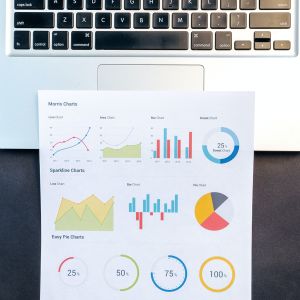
Analysts are pointing to unusual trading activity in the options market as a potential explanation for the recent rally in U.S. stocks. Last week, the composite put-call ratio, which compares volume in bearish options to volume in bullish options across all equity options trading on the U.S.'s 16 options exchanges, reached its highest level in over nine months.
According to Bloomberg data, on October 4th, the composite put-call ratio closed at 1.332, marking its highest level since December 28, 2022, when it reached 1.667. A rising put-call ratio is typically an indicator of increased demand for put options, which provide protection to investors in the event of a decline in a specific stock, index, or exchange-traded fund. Conversely, call options yield returns when the underlying asset's price rises. The average composite put-call ratio since the beginning of 2017 stands around 0.83.
However, the elevated put-call ratio did not persist for long. Within a few days, it decreased as traders loaded up on calls amidst a stock market rally that began shortly after the release of the September jobs report on Friday.
By Wednesday, the put-call ratio had fallen back to 0.792. If it remains at this level at the end of the day, it would represent the lowest end-of-day ratio since July 31st when it dropped to 0.747. Interestingly, during that same session, the S&P 500 reached its highest closing level of the year, finishing at 4,588.96 according to FactSet data.
This unusual trading pattern has caught the attention of stock market analysts who believe that options positioning likely played a significant role in driving the rapid turnaround in U.S. stocks over the past week.
The Put-Call Ratio and its Impact on Markets
The put-call ratio is a widely recognized metric on Wall Street that serves as a counter-indicator, often aligning high or low readings with market tops or bottoms. In this particular instance, the low reading observed on July 31 coincided with a near-term market top.
According to FactSet data, between August 1 and Friday, the S&P 500 experienced a significant decline of 5.9%, erasing more than one-third of its year-to-date gain.
Various factors have been attributed to the recent downturn in stock prices. Some analysts point to September's job data, suggesting that it supports the notion of a soft landing for the U.S. economy. Others credit a shift in Federal Reserve officials' rhetoric, claiming that it has helped stabilize Treasury yields and provide support for stocks. Alternatively, one prominent Wall Street strategist even suggests that the recent terror attack in Israel may have bolstered investor appetite for stocks.
However, Steve Sosnick, chief strategist at Interactive Brokers, offers a more straightforward explanation. He states that there was a sudden rush of investors shifting their positions from one side of the boat to the other. This shift can be attributed to a powerful rally that occurred on Friday and has continued since then.
As of mid-afternoon trade, the Nasdaq Composite (COMP) is poised for its fourth consecutive day of gains, currently up by 0.4%. Simultaneously, the S&P 500 is on track to rise for the fourth session in five, exhibiting a 0.2% increase in recent trade. Friday's rally played a crucial role in avoiding a fourth consecutive week of losses for the S&P 500, and the index seems positioned to rise for the second consecutive week.





Post a comment